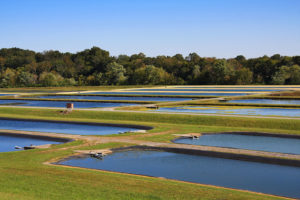Scott Nichols and the Most Asked Aquaculture Question
We asked experts in the aquaculture world the question they’re asked most frequently. During the final few days of National Seafood Month, we’re here to share their questions, and more importantly their answers.
 GAA: What’s the aquaculture question you’re asked the most? How do you answer?
GAA: What’s the aquaculture question you’re asked the most? How do you answer?
The question I hear most often is, “How can it be good to catch wild fish then feed them to farmed fish?”
That’s a pretty fair question. Let me start with a bit of background.
Historically, aquaculture diets contained proteins and omega-3 oils derived from rendered wild-caught fish like anchovies. The biggest consumers of these marine ingredients were (and are) carnivorous farmed fish such as branzino, salmon, trout and striped bass. Forty years ago it took five (or sometimes even more) tons of wild fish to raise one ton of carnivorous fish.
With changes made over the last decade, the best farmers now need around one ton of wild fish to raise one ton of farmed fish. This is important because we harvest the wild fish that provide oil and protein at the upper limit of their sustainability. For aquaculture to expand (as it must) the inclusion rate for marine ingredients in aquaculture diets must continue to decline.
Fortunately, new emerging alternative ingredients satisfy the same nutritional needs served by marine ingredients. The new alternatives ensure we will continue to have the ingredients to provide for aquaculture’s expansion. For instance, soybean and microbial proteins function perfectly well in aquaculture diets. Similarly, many new microbial sources provide the omega-3 oils so crucial to the health of the fish and those who eat them.
Back to the question – farmed fish diets that depended on the inclusion of rendered wild fish products made OK sense 40 years ago. However, aquaculture’s continuing dependency on those ingredients is untenable. Aquaculture’s expansion requires expansion of dietary ingredients that can’t be met by rendered fish. Fortunately, new feed ingredient providers make it possible to expand aquaculture without harmfully depleting wild fish populations.
GAA: What does an economically and environmentally sustainable food future look like?
Whatever shape our agricultural future adopts, it must simultaneously provide us calories AND nutrition. We need more of both. As if that weren’t enough, compared to current practices, future production systems must raise food consuming fewer inputs while also producing lower impacts.
This is the route to serving environmental, economic and public health needs.
Getting there requires every incremental improvement we can think of. But incremental improvements alone won’t be enough; we need big changes too. Aquaculture can provide some of the discontinuous change we need.
Amongst animal production systems, aquaculture is the most frugal user of environmental resources. And from a public health perspective, the favorable health outcomes of eating fish are gobsmackingly stunning. Add to this that we now barely scratch the surface of aquaculture’s potential productivity and you have one path to the agricultural expansion we need. I don’t mean to suggest that aquaculture is the single answer to our future food needs. But it does provide a path that fairly oozes hopefulness.



